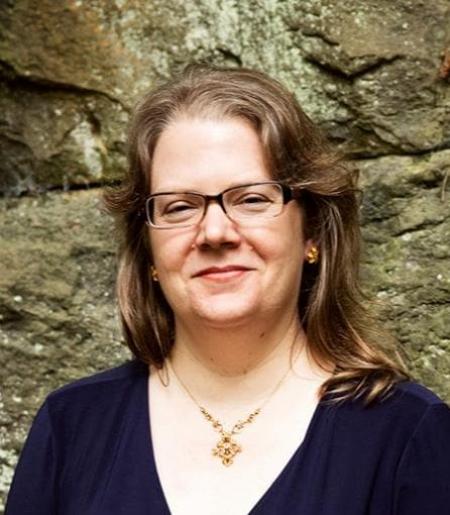Overview
Julie Phillips Brown is a poet, critic, painter, and book artist, as well an Associate Professor of English at Virginia Military Institute. After earning her M.F.A and Ph.D. at Cornell, she served as the N.E.H. Post-Doctoral Fellow in Poetics at Emory University’s Bill and Carol Fox Center for Humanistic Inquiry. In both her creative and critical practices, she focuses on the intersections of poetry and poetics, visual art, the history of the book and book arts, digital technology, and race, gender, and sexuality. Her first collection of poems, The Adjacent Possible, won the 2019 Hopper Poetry Prize for environmental writing and will be published by Green Writers Press in 2020. Other poems and essays have appeared in Borderlands, Columbia Poetry Review, Conjunctions, Contemporary Women’s Writing, Crab Orchard Review, Denver Quarterly, interim, Jacket2, Nashville Review, Plume, Posit, Talisman, Yemassee, and elsewhere. Dr. Brown is thrilled to join her fellow Fabrication scholars at the Society for the Humanities as she undertakes her current project, “The New Sister Arts,” an examination of intermediality in bookworks by contemporary women poets. Find her at tactualpoiesis.com and @jphillipsbrown on Twitter.
Research Focus
The New Sister Arts: Women and the Poet-Artist’s Book
Since antiquity, poetry and painting have been called the “sister arts,” a term suggestive of the deep affinities between poetic and painterly imaginations. For more than a century, this tradition has enjoyed a vigorous revival, as poets and artists have sought new means of marrying not only the visual and the verbal, but also the tactile and material dimensions of their work. Such hybrid forms of making are perhaps nowhere more concentrated than in the form of the artist’s book, which Drucker reminds us “maximize[s] [its] visual potential by taking advantage of images, color, photographic materials, sequencing, juxtaposition or narratives.” While Drucker, Stephen Bury, and others have addressed the artist book’s material advantages and chronicled the form’s affinities with early avant-garde typographic experimentation and Concrete poetry, no single study of the “poet-artist’s book” exists. For my purposes, the term “poet-artist’s book” specifies any bookwork whose poetic text and material form are conceived and fabricated together, integrally, by the poet- as-book artist. In The New Sister Arts: Women and the Poet-Artist’s Book, I contend that the poet- artist’s book represents a critical new intermedial bond between text and image—a bond that appears strongest in the bookworks of contemporary women poets. My project examines historical precedents for the poet-artist’s book, before then tracing the development of the form through the work of contemporary poet- book artists, such as Jen Bervin, Amaranth Borsuk, Ann Hamilton, Clarissa Sligh, Cecilia Vicuña, and Kara Walker. I argue that through their multimedia bookworks, these women seek to exploit, exceed, and otherwise explode the material and aesthetic limits of the page and the book, thereby imagining and fabricating new forms of agency, justice, and social relation in collaboration with their readers and viewers.
